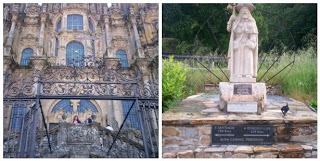 This is one of our True Story interviews, in which we talk to interesting people who have done amazing things. La Historiadora de Moda is one of the clever ladies behind Fashionable Academics. This is her story of taking part in The Camino de Santiago de Compostela – a pilgrimage route that people have been walking for more than 1,000 years! She walked 30 kilometers a day for 10 days! And didn’t die! (But her toenails did fall off.)
This is one of our True Story interviews, in which we talk to interesting people who have done amazing things. La Historiadora de Moda is one of the clever ladies behind Fashionable Academics. This is her story of taking part in The Camino de Santiago de Compostela – a pilgrimage route that people have been walking for more than 1,000 years! She walked 30 kilometers a day for 10 days! And didn’t die! (But her toenails did fall off.)Could you tell us about your religious background?
I should say that I didn’t do the Camino de Santiago for religious reasons at all. My religious background is perhaps a bit strange and quite mixed. My mother’s side of the family is Roman Catholic, and one of my late uncles was a Benedictine monk. My father’s side of the family is Methodist, but he himself was not religious. I grew up very nominally Catholic. My sister married the son of a Southern Baptist preacher and has been re-baptized as an adult. I flirted with returning to the Catholic Church, but did not.I ended up marrying a Jew and considered converting to Reform Judaism, but ultimately did not go through the process. I’m a spiritual person and an ethical monotheist, who likes saints, but I don’t identify with any organized religion.
When did you decide that you wanted to do the pilgrimage? What made you decide to do it?
I’m a historian of early modern Spain and I’ve taught several history courses that focus on the Middle Ages and the Age of the Crusades and the Spanish Reconquista. As a historian, I’ve long been fascinated by pilgrims and pre-modern religious culture. In the spring of 2007 I decided that there would never be such a prime opportunity to go on the Camino de Santiago. I was living in Madrid at the time, and I had a friend who wanted to do the Camino as well. We started doing some research and decided to walk from Astorga to Santiago de Compostela. We left Madrid on May 27th and took a train to Leon and a bus from there to Astorga and began walking the next day. We arrived in Compostela on June 6th, after walking approximately 150 miles.
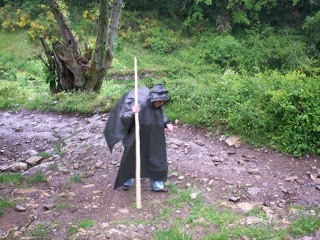 How did you deal with food and lodging?
How did you deal with food and lodging?Along the route of the Camino Francés, which is the main route of the Camino, there are numerous pilgrim hostels, where anyone who has a stamped credential, or pilgrim’s passport, can stay until all the beds are taken. Some cost a few euros a night and some cost nothing but ask for a donation. It’s all very basic. Pilgrims bring their own sleeping bags and towels.The most memorable of the places that we stayed at was a pilgrim’s hostel in a Benedictine monastery, which had been founded in the sixth century and rebuilt in the seventeenth and eighteenth centuries after a fire. There were easily a hundred of us pilgrims staying in the same room that night in Samos. Most of the pilgrim’s hostels are located near or have a restaurant and/or kitchen within them and provide a pilgrim’s meal for 9-15 euro (usually two courses, dessert, and a beverage). The main route of the Camino is dotted with small villages and towns, where you can stop at a grocery and purchase food or at a café-bar for a café con leche and toast or a sandwich or piece of tortilla (potato omelet) here and there throughout the day.
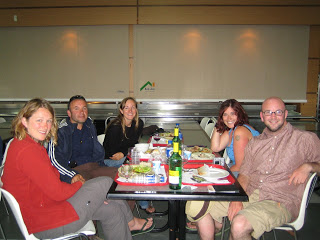
30 km a day for 10 days is so far, for so long! Did you have to replace your shoes? How did your body respond to walking that distance?
We averaged about 25-30 km a day, carrying packs that weighed around 20-25 kilos. Some days we walked a bit more, and some days we walked a bit less. I did have to replace my shoes because I very foolishly tried to do the Camino in a pair of Diesel sneakers that didn’t provide any real ankle support. Three days in, I broke down and purchased a pair of hiking boots and a walking stick.
I did have some blisters and some ankle swelling (from wearing the wrong kind of shoes to start with) and my friend had to be very patient with my slow pace until my ankle would warm up after a half hour or so every morning. A few days after I had finished the Camino, I lost one of my toenails. Other than that, my body held up pretty well until it was over. I was a bit tired and sore, but it wasn’t anything unmanageable. My friend told me after it was over that he wasn’t sure I would be able to make it with my ankle, but I never doubted in my mind that I would make it to the cathedral in Santiago de Compostela.
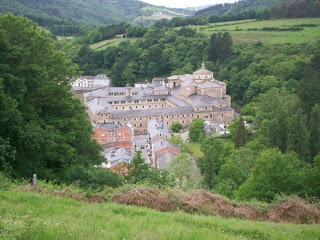 Could you tell us what the atmosphere was like on the trail? Did the pilgrims interact with each other?
Could you tell us what the atmosphere was like on the trail? Did the pilgrims interact with each other?
The atmosphere on the trail was absolutely amazing and very friendly, although there is a bit of a social divide between those who walk the Camino and those who cycle it. Fellow pilgrims greeted each other with the phrase, “Buen Camino,” regardless of what language they spoke and how few other Spanish words they knew. I met so many awesome people from all over the world during those ten days of walking. Sometimes my friend and I would end up walking with someone for hours. Sometimes we would only walk with someone for a few minutes and then they would stop or speed up, and I would wonder if I’d ever meet up with them again. Sometimes I did. Sometimes I didn’t.
When you walk with someone for several hours and eat dinner together and drink cognac together and sleep in the same space, you get to know him or her pretty well. There was plenty of time on the trail to share stories, crack jokes, or just walk in companionable silence. I’m actually still in touch with several of the people that I met on the Camino.
How did you feel when you finally reached your destination? What did you do?
When I arrived at the Cathedral in Santiago de Compostela, I wept. Once I arrived, I saw fellow pilgrims – friends – that I never had expected to see again and would never see again, and many of us were crying and embracing each other in turn. I attended a pilgrim’s mass, like countless pilgrims for centuries before me had. Then I walked around Santiago de Compostela and purchased my shell necklace at one of the boutiques. (That necklace and my hiker’s backpack are the only souvenirs that I still have from the Camino.) My friend and I met up with some of our fellow pilgrims for a celebratory dinner that night in Compostela, and then he and I caught a night train back to Madrid.
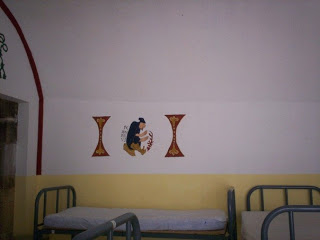 How did taking part in the pilgrimage effect your faith?
How did taking part in the pilgrimage effect your faith?For me the Camino was a very reflective — almost Zen-like — experience. I did a lot of walking meditation and worked through a lot of personal shit in my head. More than anything else the Camino gave me a lot of hope for humanity. I met one woman on the Camino who was walking the 30+ days from Saint-Jean-Pied-de-Port (on the border between France and Spain) to Santiago de Compostela as a fundraiser for girls’ education in Afghanistan. I met another woman who was walking the Way of St. James because it was a task left uncrossed off on her deceased husband’s bucket list. I met people who were doing it because they were devout Catholics taking part in a ritual of religious devotion that is centuries old. On this path, across the north of Spain, we all came together, regardless of religious and cultural differences and motivations, and formed friendships, paid for each others coffees, stood guard for one another while we urinated in fields, and slept in the same dormitories.
Amazing! Have any of your ever done a religious pilgrimage? Or just a really, really long hike? Any questions for our hiker?



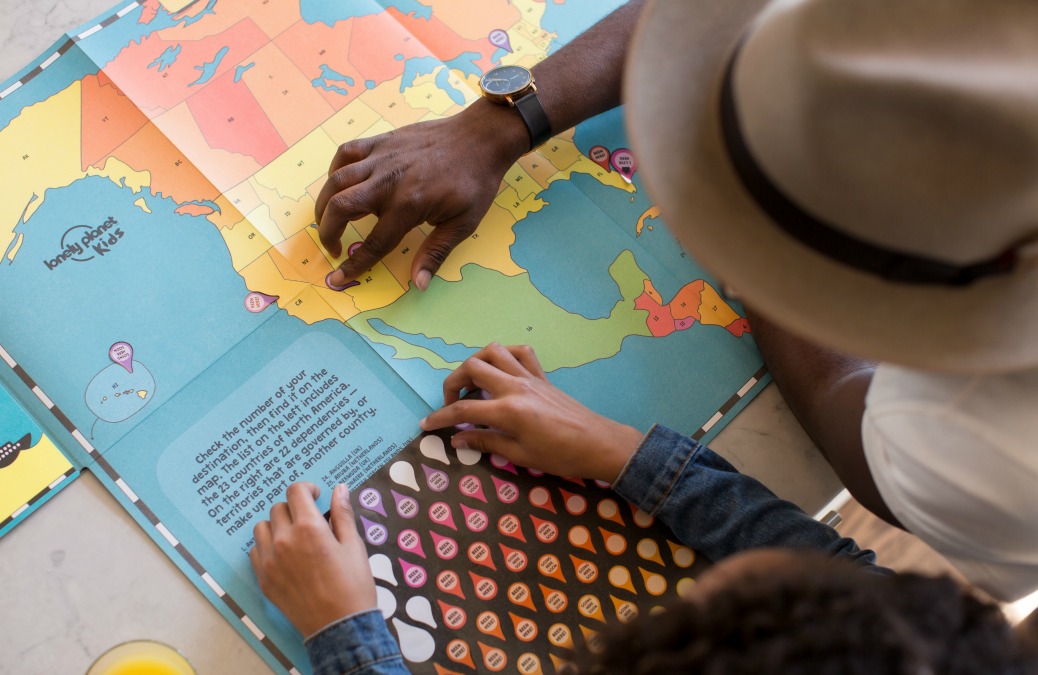
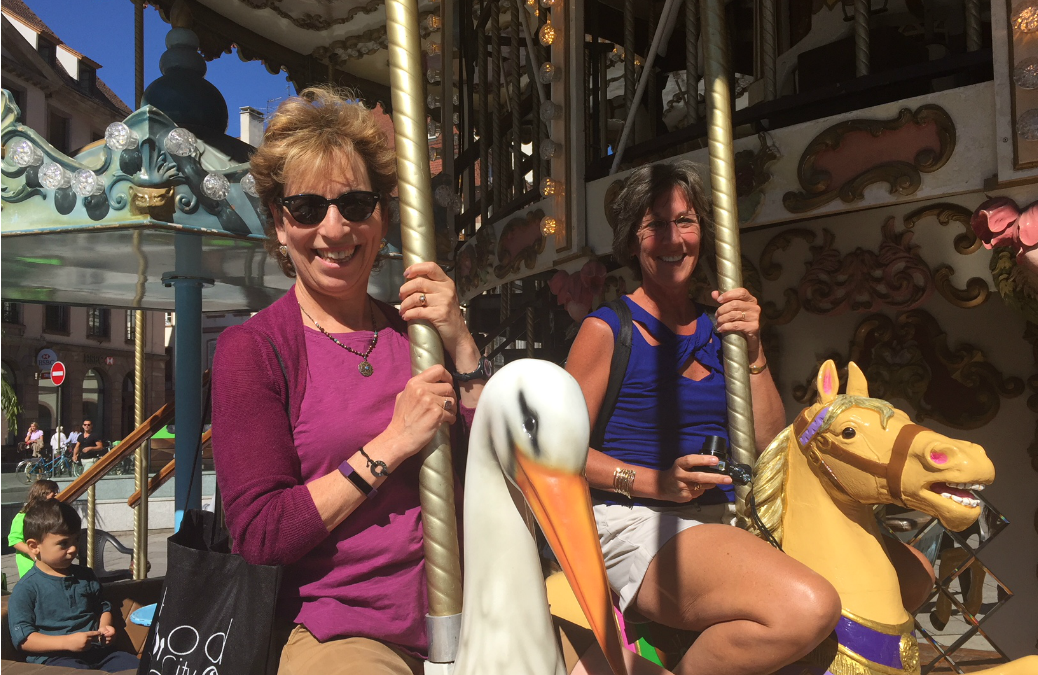
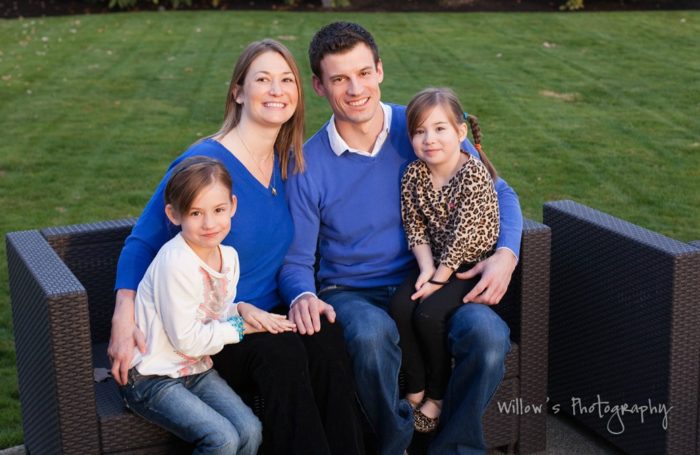
MY FIANCE DID THIS!
Last summer. 450 miles in 3 weeks.
Awesome interview! I first heard about the Camino in Spanish class about three years ago and I added it to my bucket list. I plan on doing it with my friend who was in the same Spanish class. Our teacher had done the walk with her daughter and showed us all her photos, it was inspiring. Thanks for sharing your story!
I've hiked trails in Patagonia, Torres del Paine, for ten days. It was awesome and very Zen. I am thinking of doing this journey to comemorate my PHD once I finsih. But I'm not sure winter is a good time.
This was fascinating! I've never done a pilgrimage but it's definitely something I'd consider, and after reading this I want to look into doing it more.
Thankyou for sharing! xx
Now you have me actually researching hiking the camino in winter, after I finish my PhD. 🙂 I think this might be a good thing.
What an amazing experience. Thanks for sharing!
Wow, that's amazing! I've hiked some pretty long hikes, but nothing like that!
Thank you all! Sarah has the best readers!
@Paula, you might find it to be a very lonely path if you do the Camino during the winter. I went in May/June and it gets busier in the summer as the feast day of the saint approaches in July. Good luck finishing your PhD!
Dang! This is sweet! Right after graduating high school I went and climbed Kilimanjaro, which essentially is a really really long hike. It was amazing. But I'm dreaming of doing some sort of pilgrimage in my life time! Hopefully to Ephesus or Jerusalem!
Wow! Sounds like a really interesting (and challening) journey to make.
Great post! LHdM rocks!
My parents hiked the Camino a couple of years ago with a group of friends. They had the most amazing stories about it, very similar to the ones in this interview. They met new people, ate amazing, yet simple food, and saw beautiful architecture. I think that they went to the Benedictine monastery as well! Thanks for sharing this with us 🙂
Wow, I don't think I could physically do something like that! I think pilgrimage is a fascinating idea, even though I come from a religion which doesn't have the same associations with it as the big 3 religions.
Apparently a book called Sacred Journey (on my library list!) has the steps of pilgrimage & they could really apply to any religious journey. I'm sure our planned trip to Germany & Scandinavia next year could be counted as a pilgrimage (although – hopefully – a less physically exhausting one 😉 ).
Great post, so interesting, thank you for sharing!
this is amazing! what an interesting, fantastic thing to do.
I haven't done anything quite like this, but I was discerning the religious life so have visited many religious sisters around the country. This was a wonderful read :).